More images from the collection of Emma Beauvais Thomas Grumley.
This is the tenth post in this series.
For those of you who are just coming on board, all of these images are part of a collection that once belonged to young Emma Thomas, daughter of William Lyman and Catherine (Kate) Sutton Thomas. I assume all were friends, acquaintances or family of Emma’s. She wrote her name on the back of many of them to identify herself as the owner but many have no information to identify the subjects.
Vintage images such as these found in a tag sale or antique store would have only a small amount of value. These are important because they all belonged to Emma and are a good record of the many people in her life. She was born on land that once belonged to her grandfather, James C. Sutton. It is land that would one day become Maplewood. Emma lived here her entire life.
From these images of Emma’s people we can all have a good look at the populace of our neighborhoods many years before any of us came along.
I’ll lead off with some interesting information discovered in Newspapers.com about the Genelli Studio. I ran the Genelli images from Emma’s collection in a previous post. You can find them here.

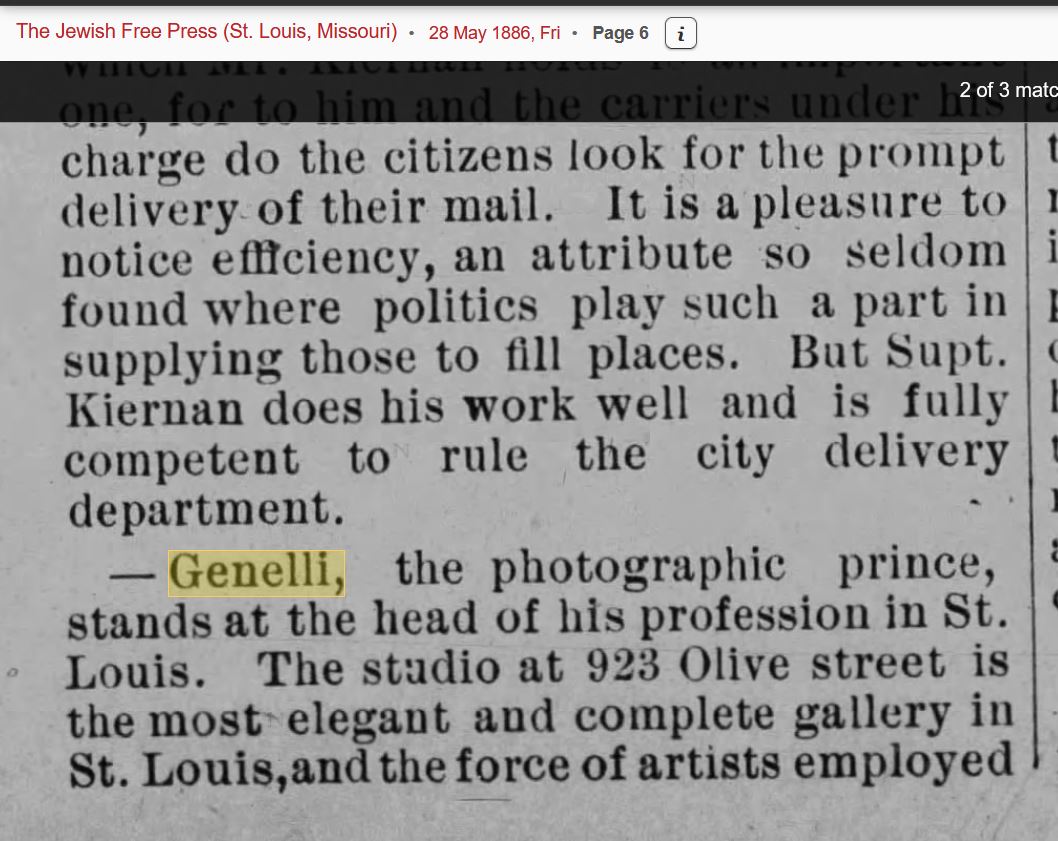
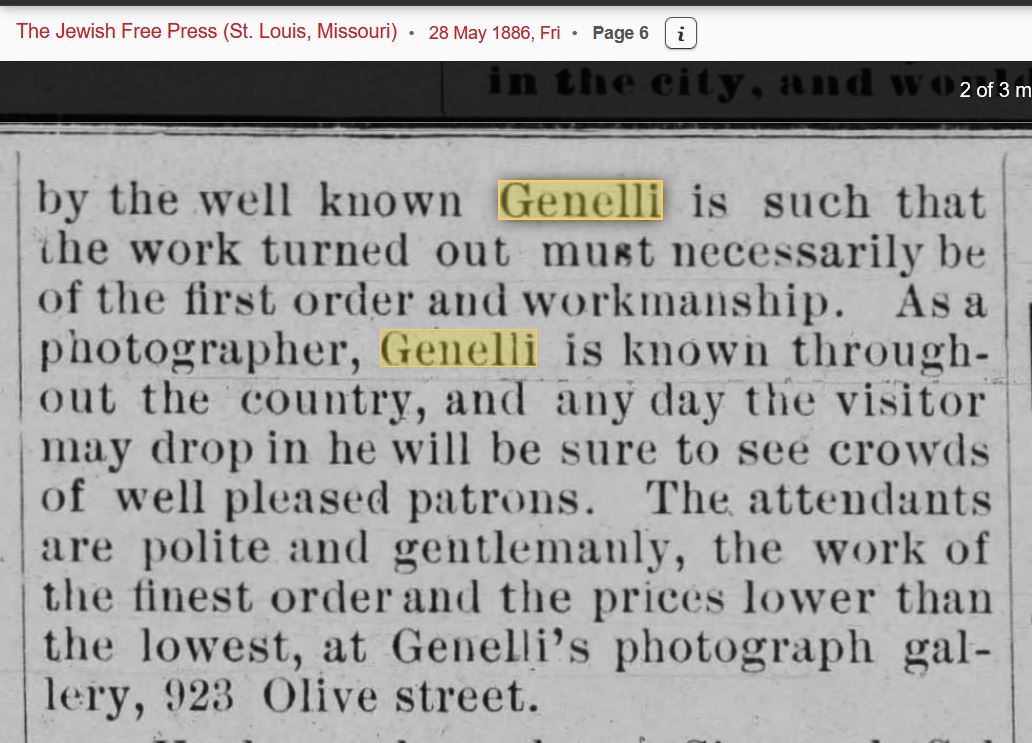

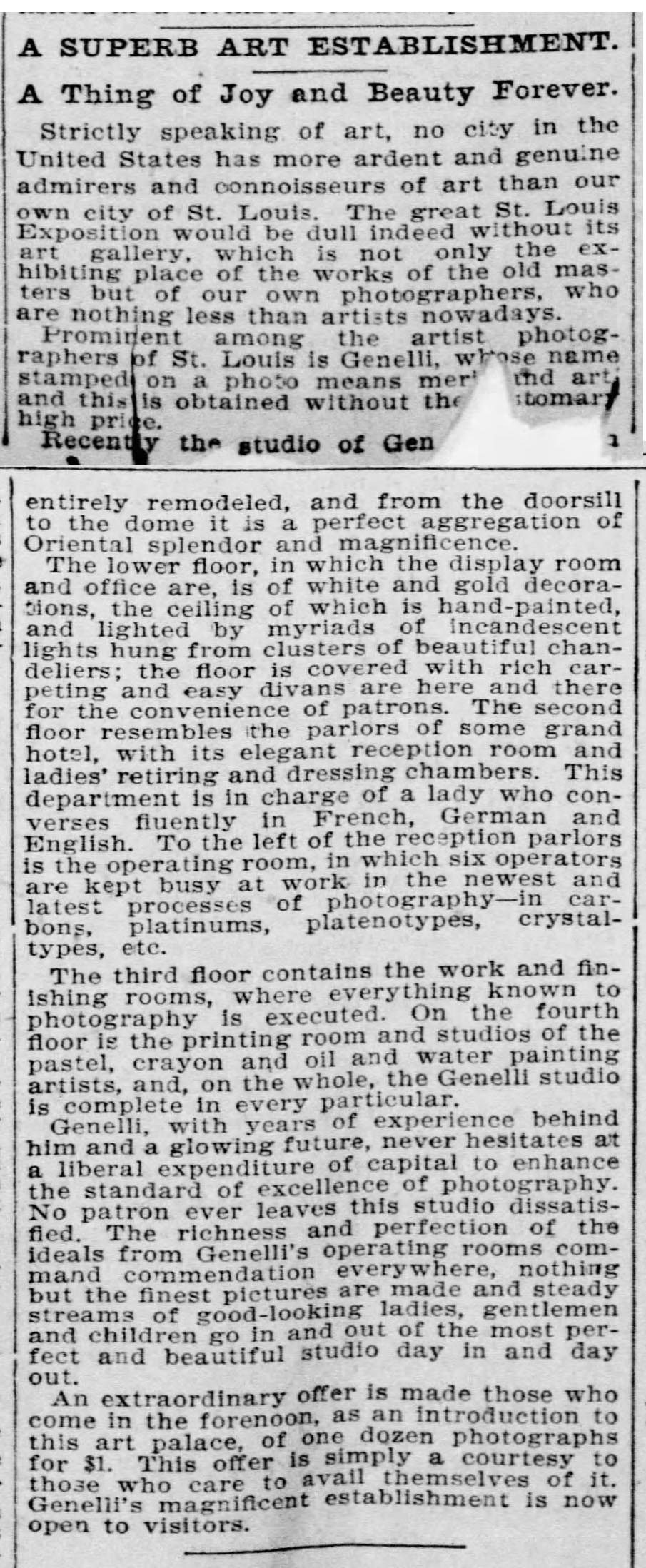


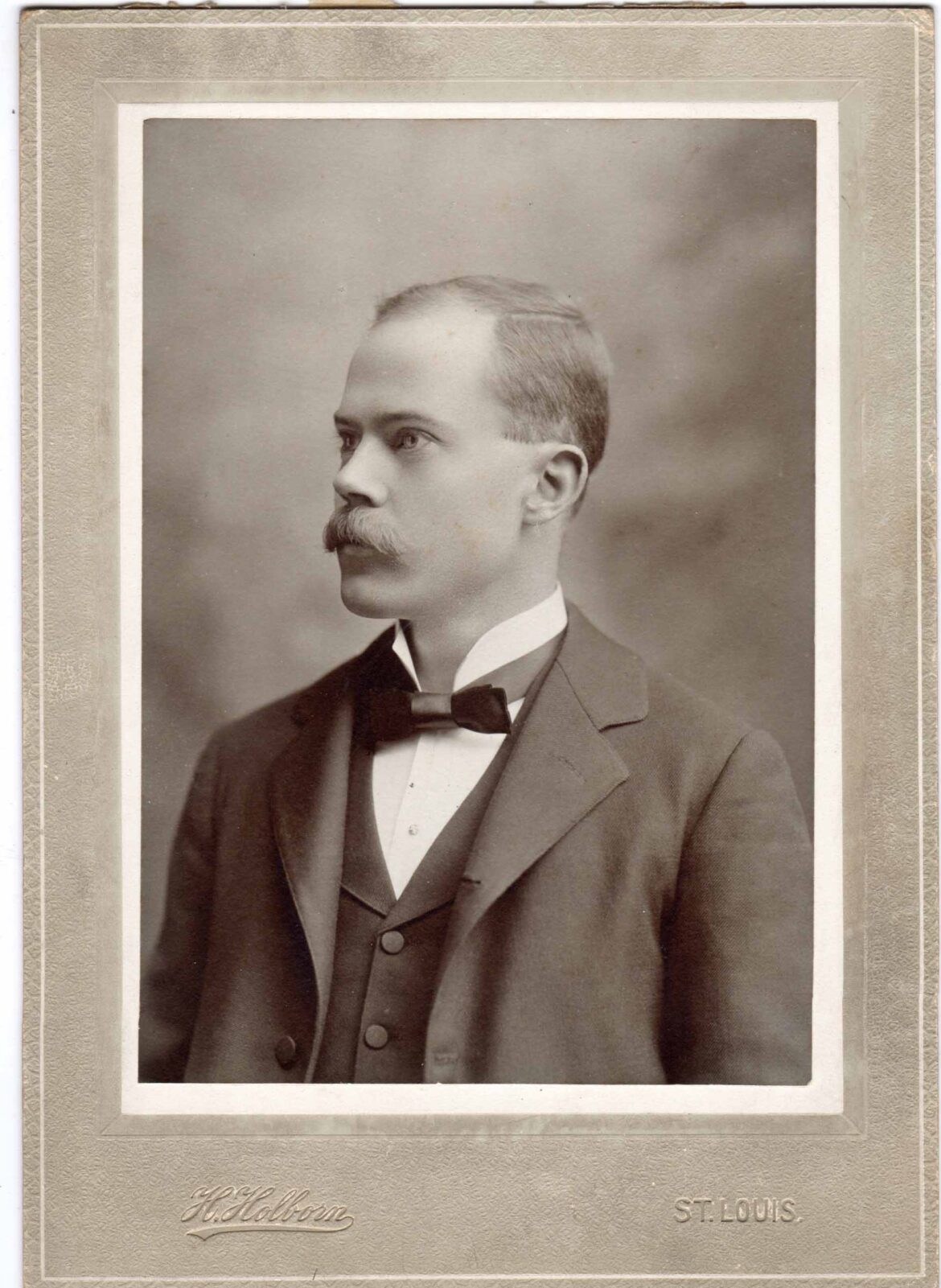





It’s an easy thing to turn up information on these guys using Newspapers.com. Perhaps too easy?



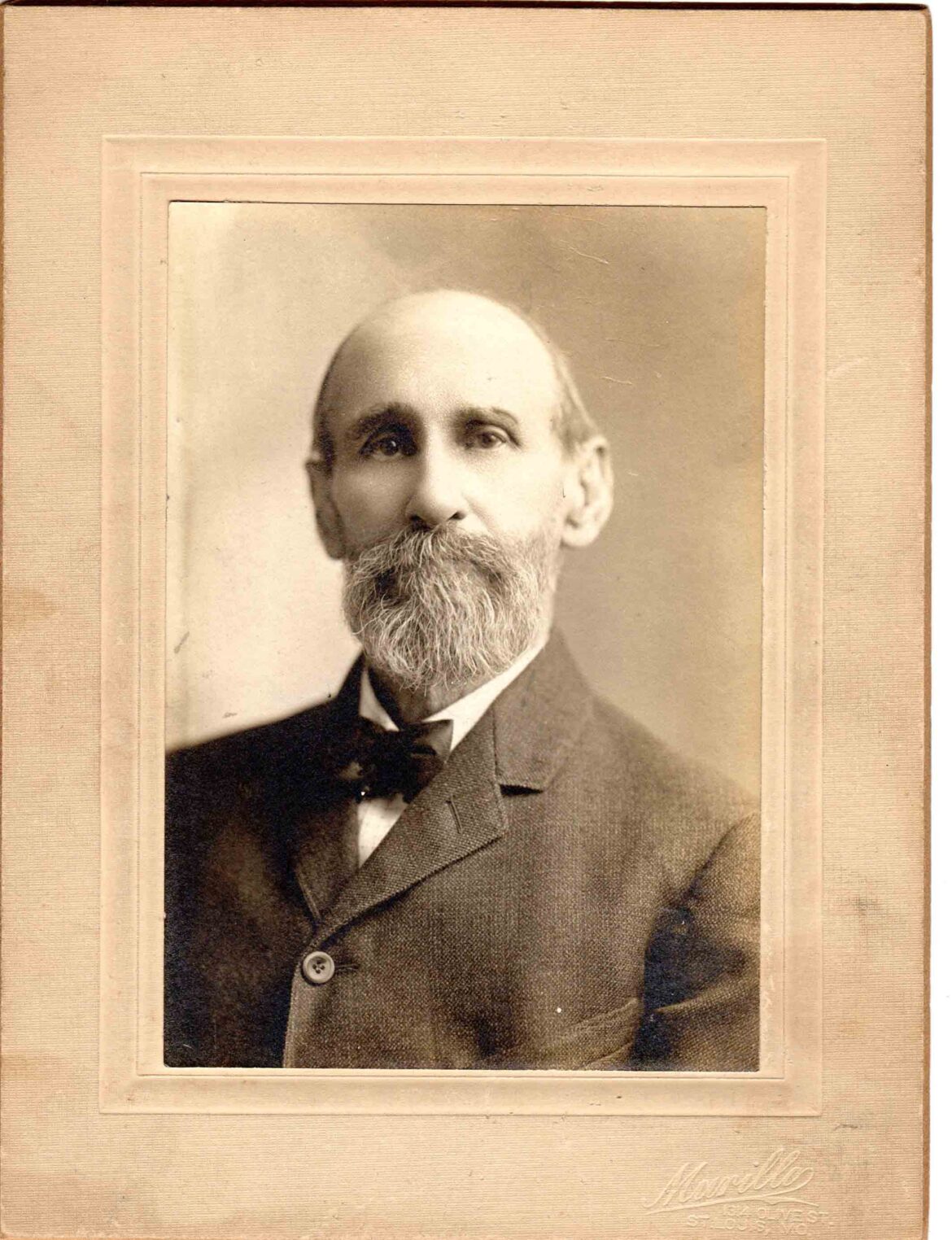
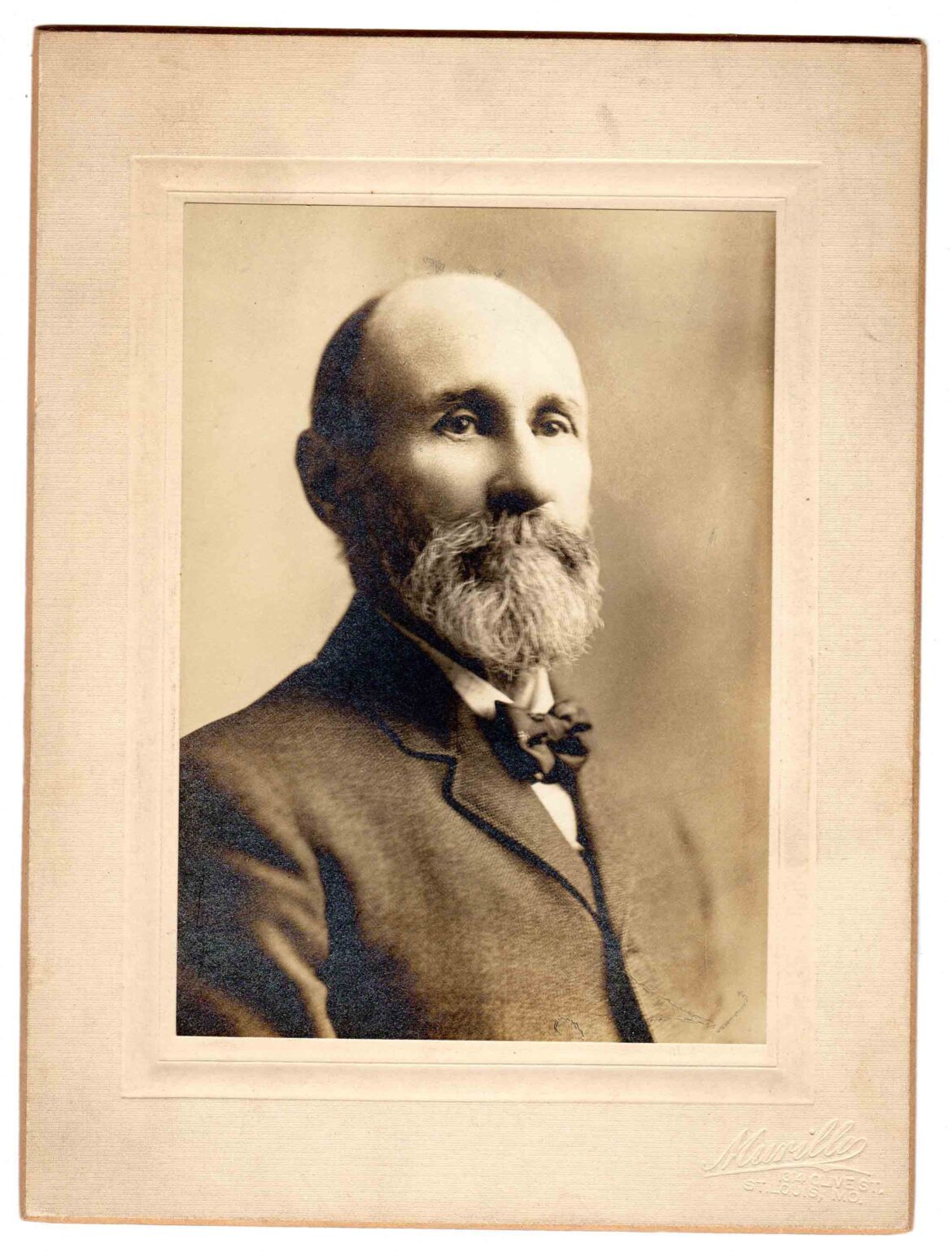
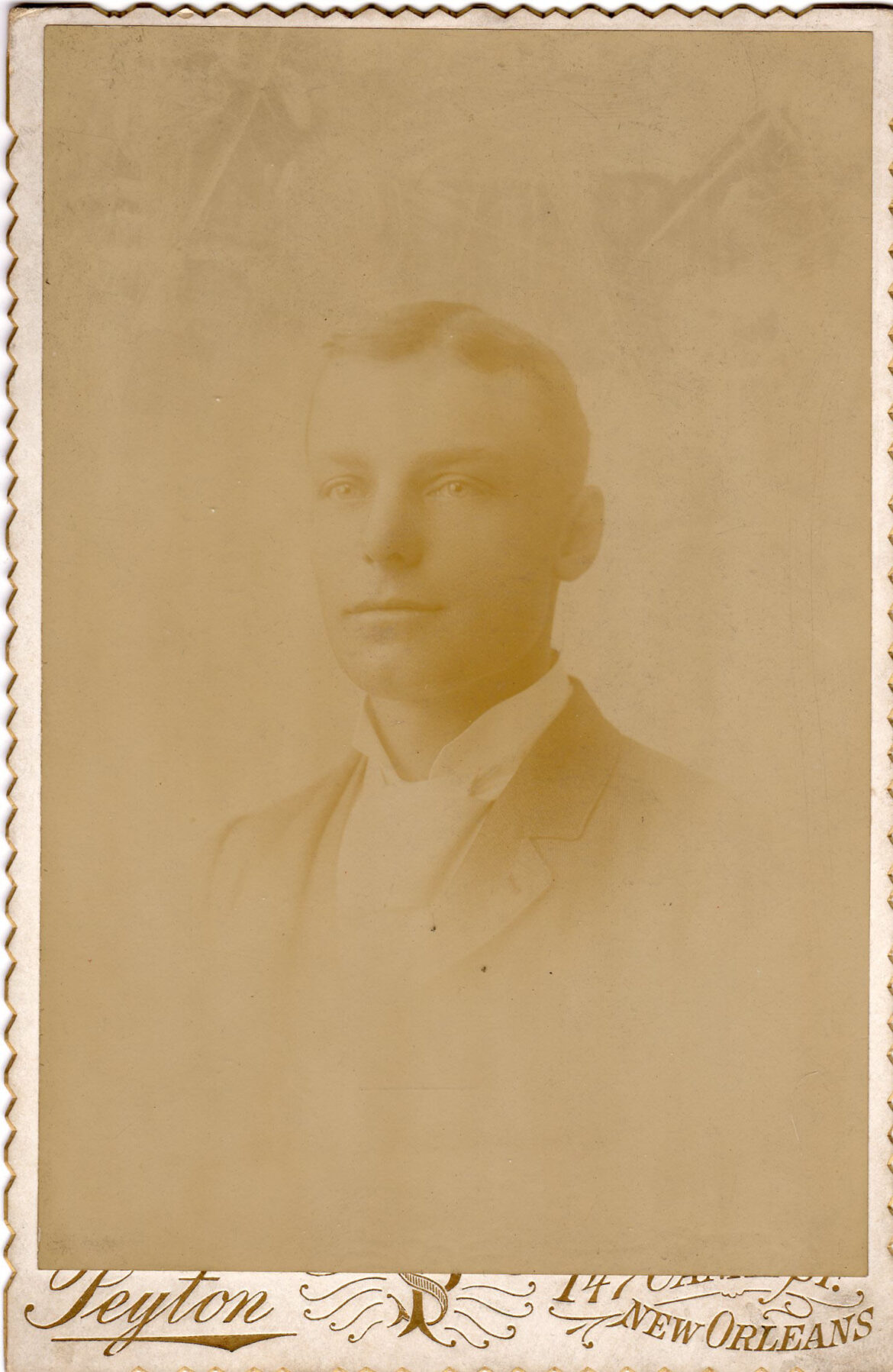


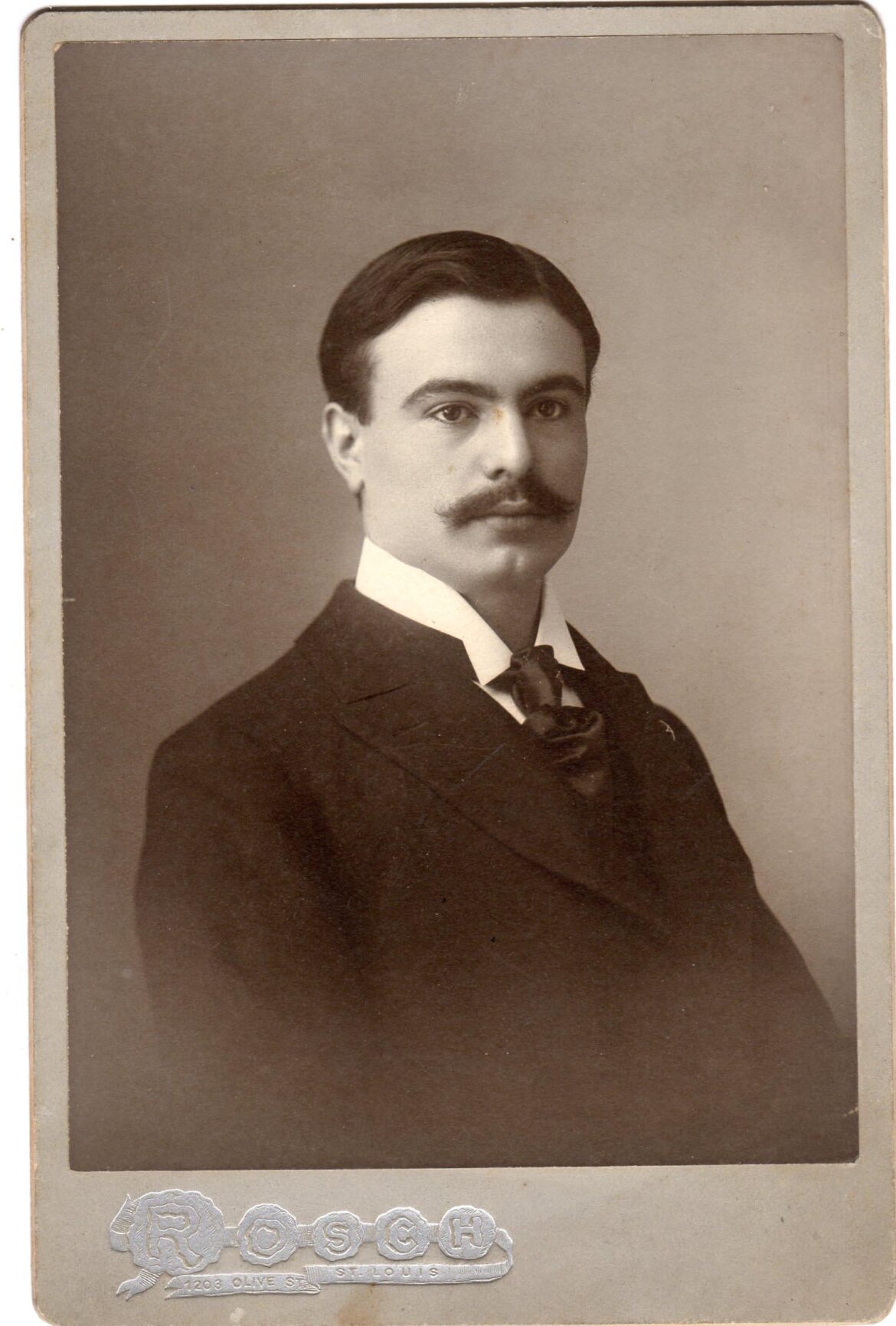

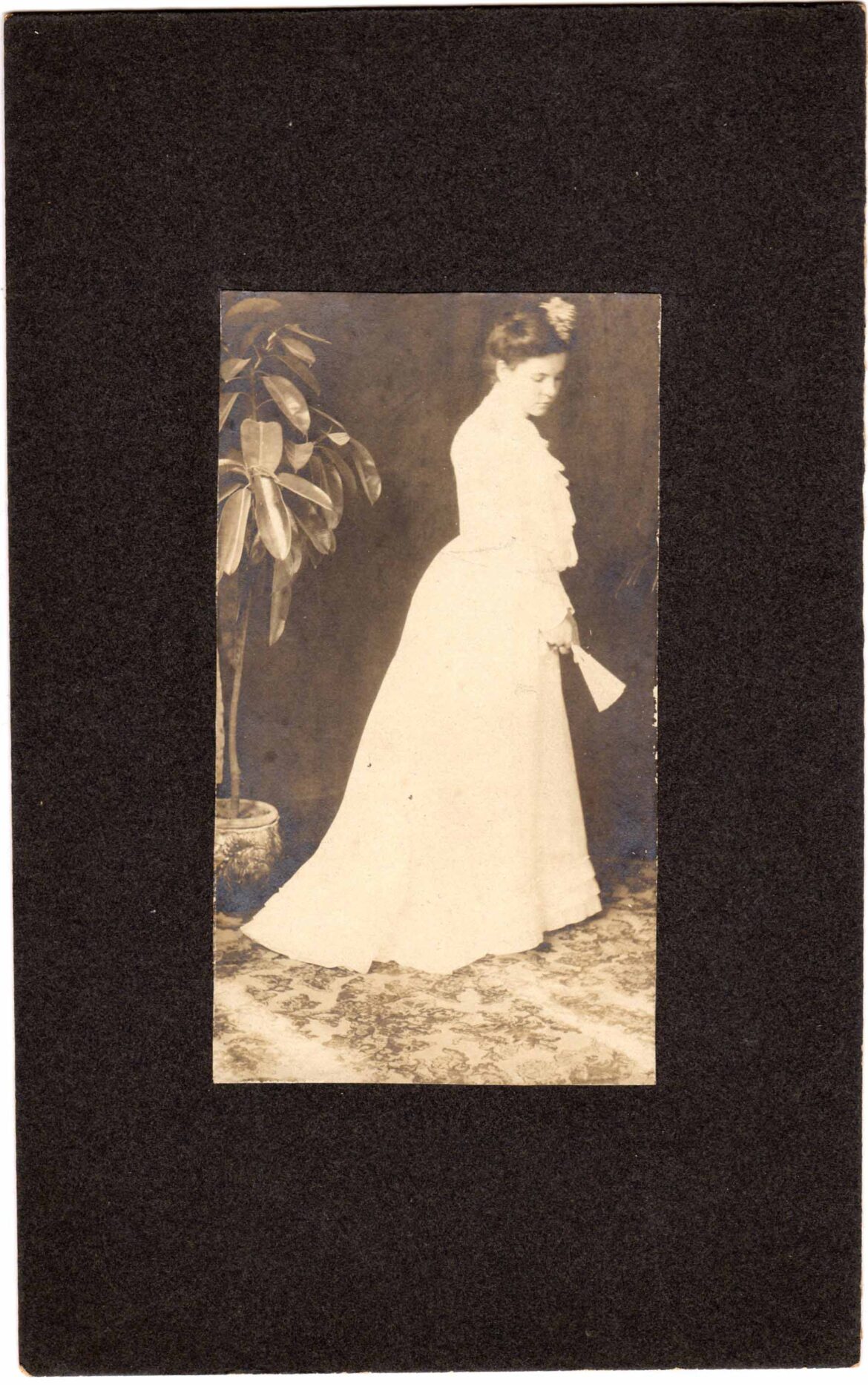
Well, believe it or not, there are still more images to present next post. We are only up to the R’s so we still have the rest of the alphabet to take a look at.
As I have mentioned several times in the past, all of the original images seen in this post (and in the large majority of my posts in the past…going way back) are now in the collection of the State Historical Society of Missouri at UMSL in the Thomas Jefferson Library, next to the Mercantile Library. If you go up there to see them, tell those nice folks I said, “Hi.”
Speaking of nice folks, we have been given the opportunity to see these rare surviving remnants of our early community through the kindness and generosity of Chrissie Hayes McConnell.
I am thankful for the springtime weather. And I’m thankful for the sane and reasonable folks at the highest level of our government who are trying hard to cope with the murderous, insane ones at the top in Russia. My heart goes out to the people of Ukraine.
As always, I appreciate your interest in and support of this effort.
Doug Houser April 5, 2022


Greetings to you Doug, your recent publications reminded me that we have several Genelli photos among other photos from studios in St. Louis of the same period. I often wondered what those studios were like, so the description of the remodeled Genelli studio was really interesting. Thank you for your tireless efforts revealing life here before our existence.
You are very welcome, Gary. I always appreciate the comments made by you and your lovely wife.
The Rosch photo of the woman holding a fan is very reminiscent of paintings of that period in contrast to the other portraits. The figure is positioned off center and near the top of the frame, leaving a lot of carpet at the bottom, almost as though the photographer were standing on a chair. You see that tipped perspective in some Sargent paintings. The woman’s position, turning toward the photographer behind her, is similar to Sargent’s well-known portrait of Nancy Astor. I guess you could call this an art photo, and I wonder if Rosch did many others.
I agree with you, Esley. These studio photographers were definitely trying to establish photography as a legitimate art form. You are quite right that the pose in that last image resembles some in paintings at that time. The photographers were in direct competition with the family portrait painters that preceded them. Indeed they employed painters of their own to add color and life to their clients images. My earlier post about the Guerin Studio contains a newspaper article that makes the point about how the Guerin images compare with real statuary. Thanks for your comment.
https://40southnews.com/maplewood-history-vintage-photographs-from-the-guerin-studio/
Comments are closed.